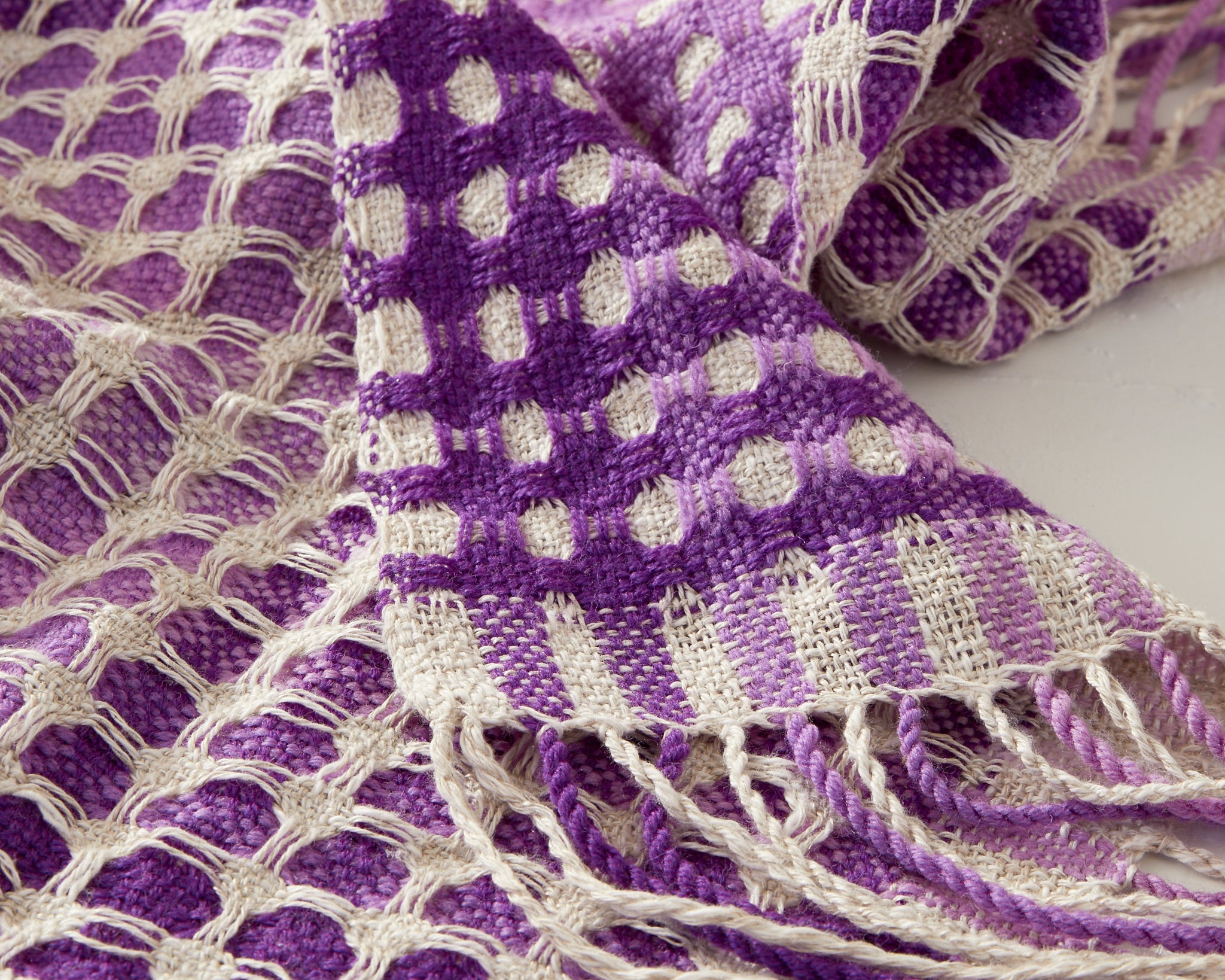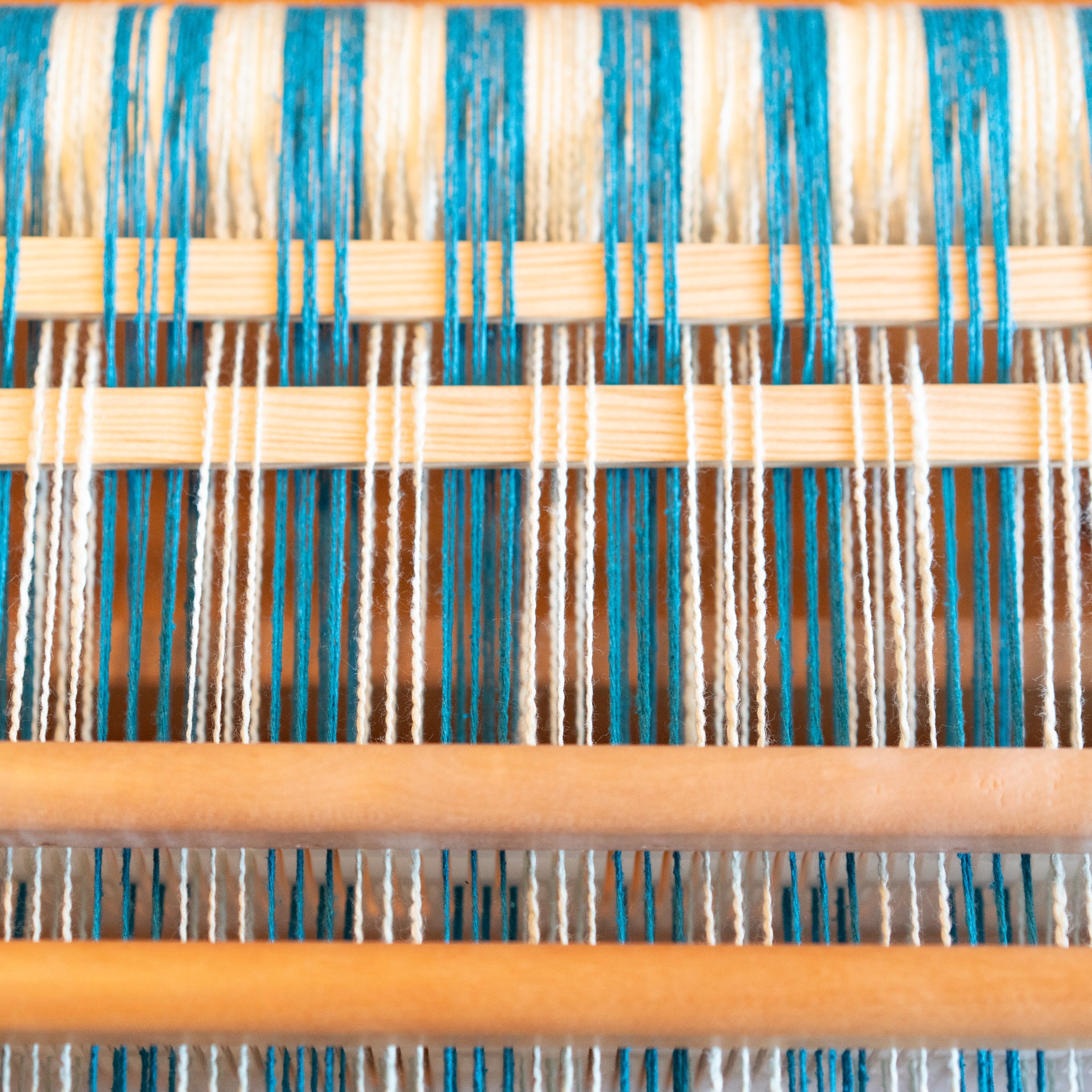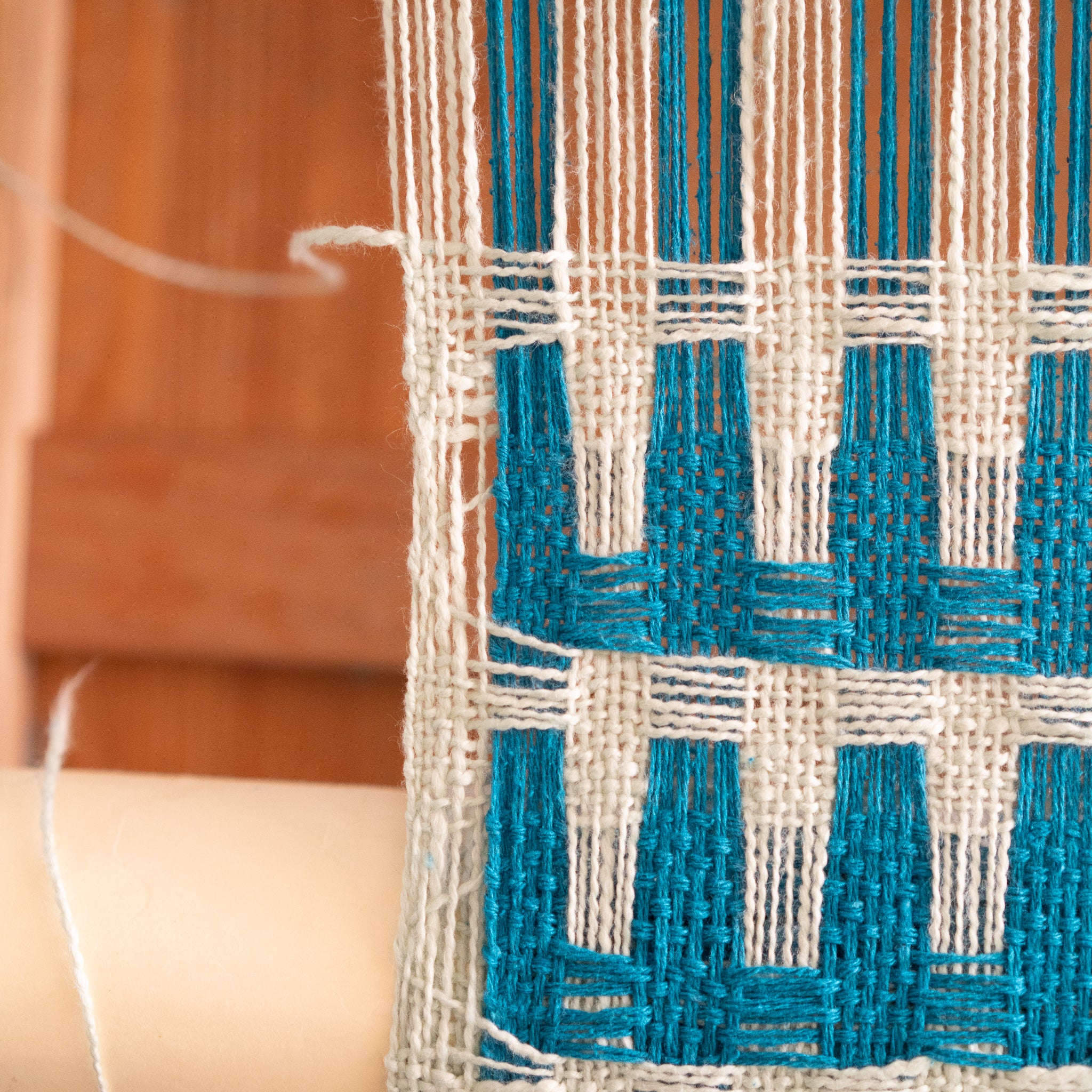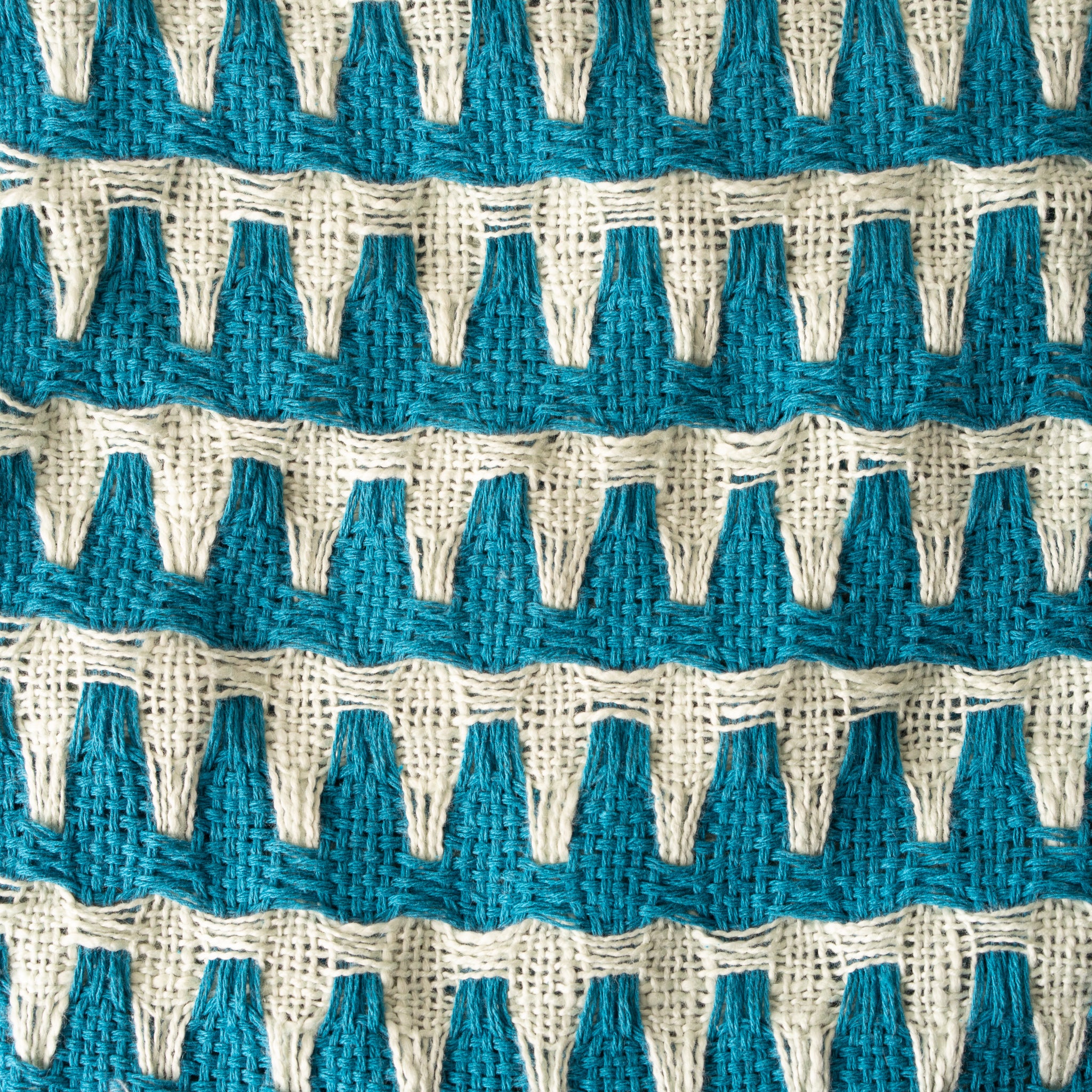Shopping Cart
*continental US addresses only
*continental US addresses only
Your Cart is Empty
Deflection in weaving happens when (intentional) floats curve around areas of Plain Weave, such as in the Huck Lace Placemats and Runner patterns. Doubleweave is the weaving of two layers of fabric simultaneously to create tubes, pockets or cloth twice the width of the loom, such as in the Twofold series.
But there’s no law that limits weavers to only one structure in a project. Combining the curves of deflection and the layers of doubleweave creates deflected doubleweave – a magical structure that is common in shaft-loom weaving. But with two heddles and, in some cases, two pick-up sticks, the humble rigid heddle loom can also create this stunning structure.
Deflected doubleweave on rigid heddle takes a little patience, but it’s relatively easy to thread and weave, even for someone new to multi-heddle weaving. To get you started, here are some tips that were used in the Deflected Reflections and Bridgetown scarves.
Direct warping works very well for deflected doubleweave and isn’t much different from threading one heddle. Set two heddles in the loom and pull the warp loops through the slots of both heddles simultaneously, then beam on.
 Photo by Christine Jablonski
Photo by Christine Jablonski
Sley the “hole” ends through their corresponding heddle (one layer is sleyed through the front heddle holes and the other layer is sleyed through the rear heddle holes), while keeping the slot threads in place, and you are ready to tension and weave.
 Photo by Christine Jablonski
Photo by Christine Jablonski
Raising and lowering both heddles together creates plain weave, but manipulating each heddle individually creates more complex structures. The Deflected Reflections scarf only required two heddles – no pick-up sticks!
 Deflected Reflections scarf detail, photo by Ian Justice
Deflected Reflections scarf detail, photo by Ian Justice
Some projects require two heddles and two pick-up sticks. Selecting the slot threads to pick up is easy because only one yarn is picked up per stick; no counting is required! I use warping sticks here, but I have also used knitting needles, rulers... and even, on a rare occasion, actual pick-up sticks.
For the Bridgetown Scarf, the blue threads are picked up onto Stick A, while the cream threads are on Stick B. Stick A remains in place for the duration of the weaving, while Stick B is placed as needed.
 Pick-up stick placement for the Bridgetown scarf, photo by Carly Jayne
Pick-up stick placement for the Bridgetown scarf, photo by Carly Jayne
Weaving with two layers of cloth means managing two sets of selvedges – one inner and one outer selvedge. In the Bridgetown Scarf pattern, the blue layer selvedge rests inside the cream layer selvedge.
 Photo by Carly Jayne
Photo by Carly Jayne
To avoid floats of one color across the other when changing layers, the shuttle of the inner layer will need to sit above or below the cloth when inactive so the yarn can travel up the edge of its own block when the opposite color is woven. Which side of the weaving the inner layer shuttle will rest depends on which side the weaving began.
 Inner layer shuttle “diving” below cloth to weave the next block, photo by Carly Jayne
Inner layer shuttle “diving” below cloth to weave the next block, photo by Carly Jayne
Deflected doubleweave has long floats and unwoven areas, which can seem unstable and lacy off the loom. Wet-finishing is extremely important to bring the web of threads together as a finished cloth. For this project, we carefully machine-dried the wet-finished scarf for a hint of differential shrinkage between the two yarns. Once the scarf is finished to your preference, hand-wash and air-dry as ongoing care to maintain the design and texture.
I really hope you enjoy weaving and experimenting with deflected doubleweave. Once you’ve mastered the basics of the structure, you can experiment with different yarns and fibers for an infinite number of textural and graphic possibilities, all on a rigid heddle loom!
 Bridgetown scarf wet-finished and dried, photo by Carly Jayne
Bridgetown scarf wet-finished and dried, photo by Carly Jayne